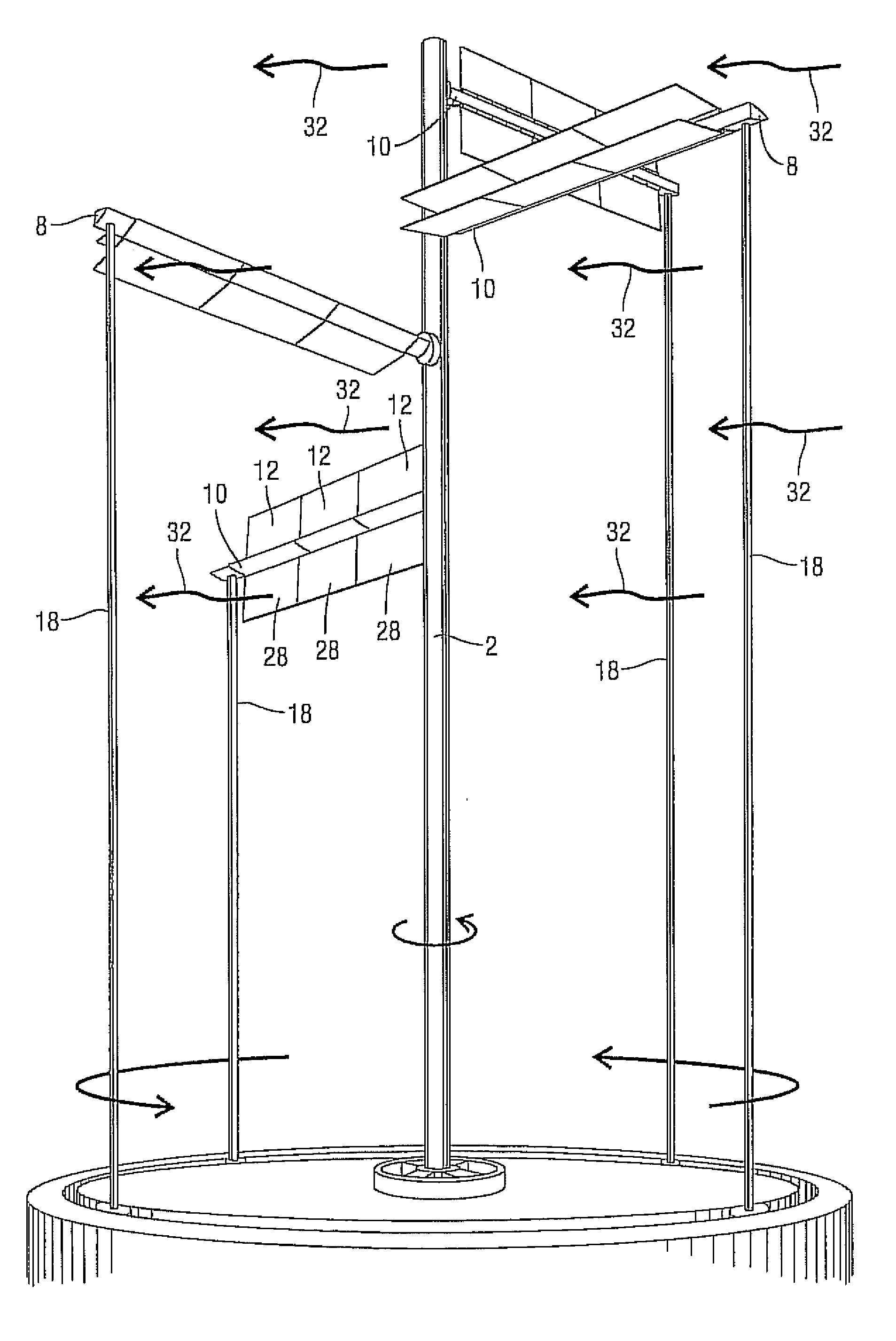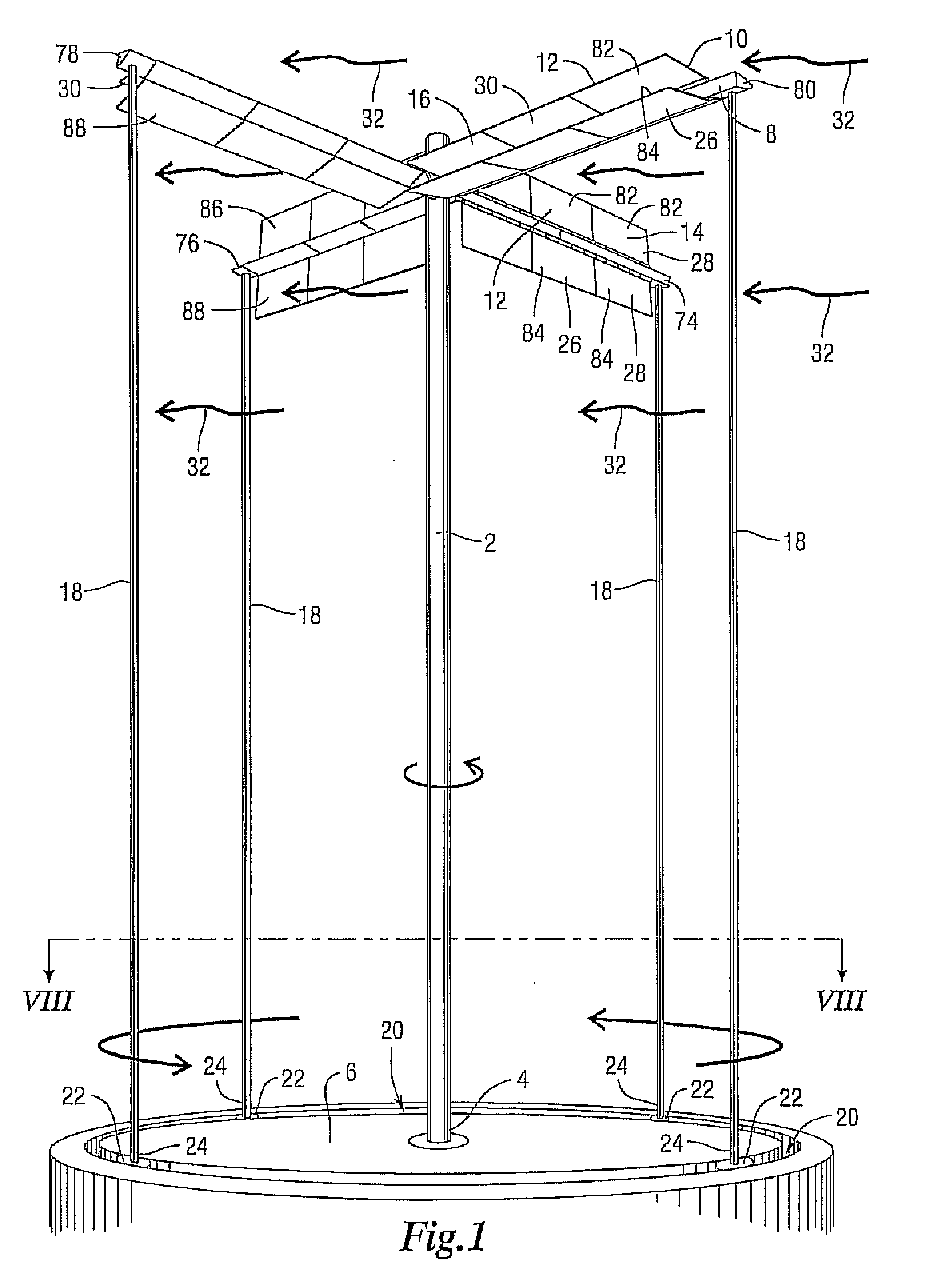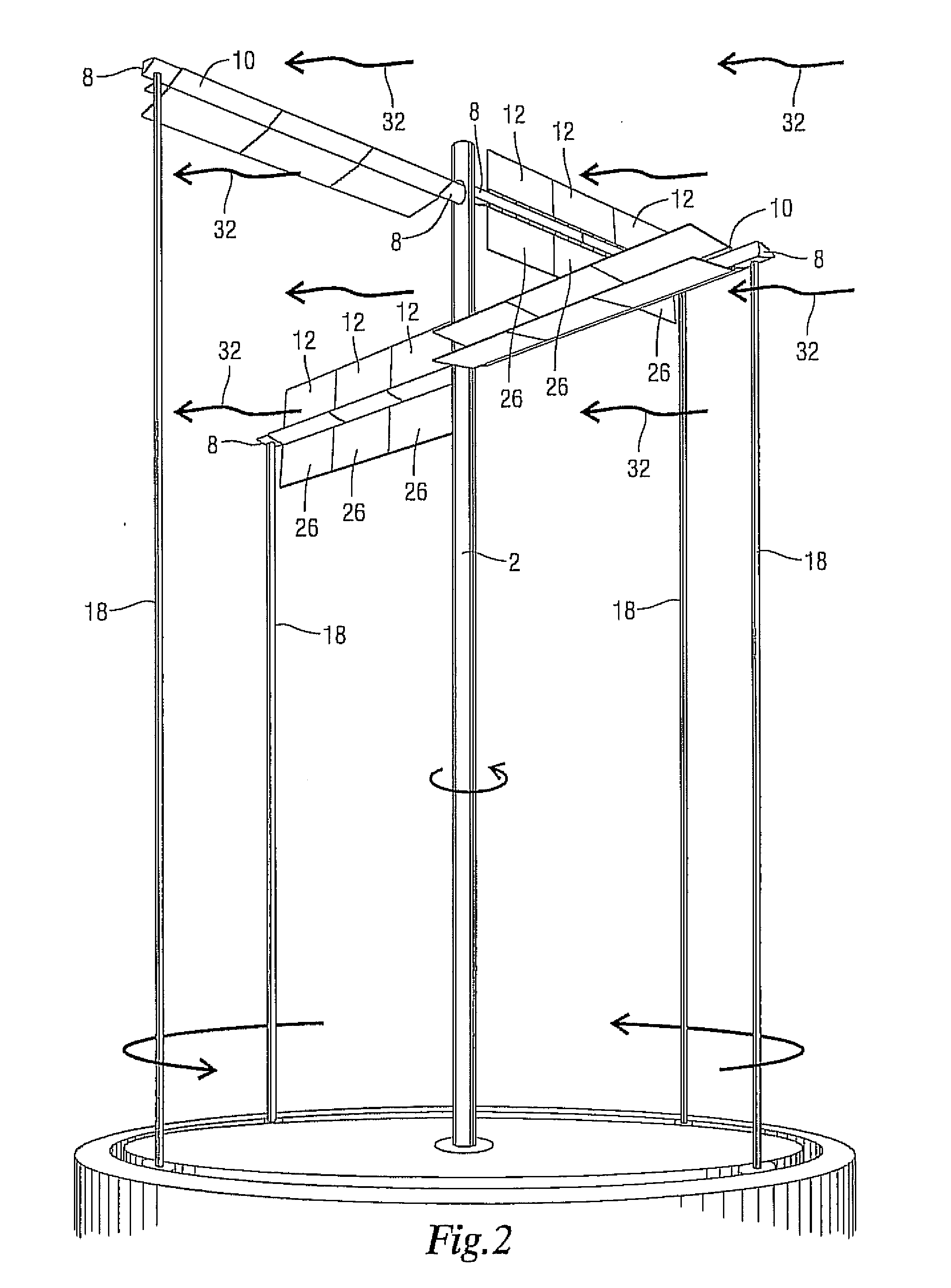Method and Apparatus for Capturing Wind to Produce Electrical Power
a technology of wind and electric power, applied in the direction of wind motors with perpendicular air flow, liquid fuel engine components, non-positive displacement fluid engines, etc., can solve the problems of electric harvesting dropping enormously and possibly to zero, blades flying off the pole, and propeller-type units having to face into the wind, so as to increase the ability to move the leading face, reduce drag, and increase surface area
- Summary
- Abstract
- Description
- Claims
- Application Information
AI Technical Summary
Benefits of technology
Problems solved by technology
Method used
Image
Examples
Embodiment Construction
[0041]FIG. 1 shows a blade system for use in a wind turbine to produce electrical power. A substantially vertical rotor shaft 2 having a rotor shaft bottom 4 is rotatably coupled to anchor pad 6 at the rotor shaft bottom 4. A substantially horizontal blade arm 8 is supported by the rotor shaft 2. A blade assembly 10 has a rotatable flap 12 capable of opening and closing to provide an open position 14 and a closed position 16 and is rotatably coupled to the blade assembly 10. A support pole 18 is coupled to the blade arm 8 and vertically supports the blade arm 8. A track 20 surrounds the rotor shaft 2. A track device 22 is movably coupled to the track 20. A bottom end 24 of the support pole 18 is coupled to the track device 22. The bottom end 24 of support pole 18 is spaced radially from the rotor shaft 2.
[0042]A rotatable cooperating flap 26 is rotatably coupled to the blade assembly 10. The flap 12 and the cooperating flap 26 form an open position 28 when the flap 12 is in the open...
PUM
 Login to View More
Login to View More Abstract
Description
Claims
Application Information
 Login to View More
Login to View More - Generate Ideas
- Intellectual Property
- Life Sciences
- Materials
- Tech Scout
- Unparalleled Data Quality
- Higher Quality Content
- 60% Fewer Hallucinations
Browse by: Latest US Patents, China's latest patents, Technical Efficacy Thesaurus, Application Domain, Technology Topic, Popular Technical Reports.
© 2025 PatSnap. All rights reserved.Legal|Privacy policy|Modern Slavery Act Transparency Statement|Sitemap|About US| Contact US: help@patsnap.com



